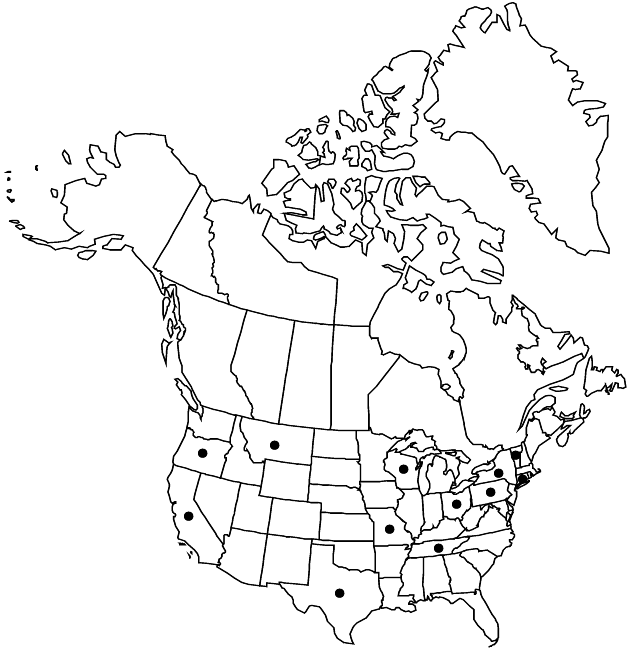Difference between revisions of "Crepis setosa"
Arch. Bot. (Leipzig): 1(2): 1. 1797.
FNA>Volume Importer |
imported>Volume Importer |
||
| (5 intermediate revisions by 2 users not shown) | |||
| Line 8: | Line 8: | ||
}} | }} | ||
|common_names=Bristly hawksbeard | |common_names=Bristly hawksbeard | ||
| + | |special_status={{Treatment/ID/Special_status | ||
| + | |code=I | ||
| + | |label=Introduced | ||
| + | }} | ||
|basionyms= | |basionyms= | ||
|synonyms= | |synonyms= | ||
| Line 24: | Line 28: | ||
|elevation=50–500 m | |elevation=50–500 m | ||
|distribution=Calif.;Conn.;Mo.;Mont.;N.Y.;Ohio;Oreg.;Pa.;Tenn.;Tex.;Vt.;Wis.;Europe. | |distribution=Calif.;Conn.;Mo.;Mont.;N.Y.;Ohio;Oreg.;Pa.;Tenn.;Tex.;Vt.;Wis.;Europe. | ||
| + | |introduced=true | ||
|discussion=<p><i>Crepis setosa</i> is recognized by its annual habit, shallow roots, coarsely setose stems, leaves, and involucres, the relatively large runcinate leaves, sagittate-laciniate cauline leaves, finely beaked cypselae, and white, fine pappus bristles.</p> | |discussion=<p><i>Crepis setosa</i> is recognized by its annual habit, shallow roots, coarsely setose stems, leaves, and involucres, the relatively large runcinate leaves, sagittate-laciniate cauline leaves, finely beaked cypselae, and white, fine pappus bristles.</p> | ||
|tables= | |tables= | ||
| Line 33: | Line 38: | ||
-->{{#Taxon: | -->{{#Taxon: | ||
name=Crepis setosa | name=Crepis setosa | ||
| − | |||
|authority=Haller f. | |authority=Haller f. | ||
|rank=species | |rank=species | ||
| Line 48: | Line 52: | ||
|publication title=Arch. Bot. (Leipzig): | |publication title=Arch. Bot. (Leipzig): | ||
|publication year=1797 | |publication year=1797 | ||
| − | |special status= | + | |special status=Introduced |
| − | |source xml=https:// | + | |source xml=https://bitbucket.org/aafc-mbb/fna-data-curation/src/2e0870ddd59836b60bcf96646a41e87ea5a5943a/coarse_grained_fna_xml/V19-20-21/V19_313.xml |
|tribe=Asteraceae tribe Cichorieae | |tribe=Asteraceae tribe Cichorieae | ||
|genus=Crepis | |genus=Crepis | ||
Latest revision as of 19:51, 5 November 2020
Annuals, 8–80 cm (taproots shallow). Stems 1, erect (often reddish), stout (fistulose), simple or branched proximally, coarsely setose or hispid (at least distally, setae yellowish). Leaves basal and cauline; petiolate; blades oblanceolate, often runcinate or lyrate, 5–30 × 1–8 cm, margins dentate to pinnately lobed (terminal lobes often relatively large), apices acute to obtuse, faces finely hispid (coarsely setose along midribs; cauline leaves lanceolate, bases sagittate with acuminate lobes, margins dentate to deeply laciniate proximally). Heads 10–20, in paniculiform or cymiform arrays. Calyculi of 10–14, linear, coarsely setose bractlets 2–4 mm. Involucres cylindro-campanulate, 6–10 × 4–10 mm. Phyllaries 12–16, lanceolate, 6–7 mm, (bases strongly keeled and thickened, margins green to yellowish), apices acuminate, abaxial faces coarsely setose or hispid, adaxial with fine hairs. Florets 10–20; corollas yellow, sometimes reddish abaxially, 8–10 mm. Cypselae reddish brown, fusiform, 3–5 mm, beaked (beaks 1–2 mm), ribs 10 (rounded, spiculate near bases of beaks); pappi white (fine, soft), 4 mm. 2n = 8.
Phenology: Flowering May–Nov.
Habitat: Openings in mixed conifer forest, disturbed areas, lawns
Elevation: 50–500 m
Distribution

Introduced; Calif., Conn., Mo., Mont., N.Y., Ohio, Oreg., Pa., Tenn., Tex., Vt., Wis., Europe.
Discussion
Crepis setosa is recognized by its annual habit, shallow roots, coarsely setose stems, leaves, and involucres, the relatively large runcinate leaves, sagittate-laciniate cauline leaves, finely beaked cypselae, and white, fine pappus bristles.
Selected References
None.